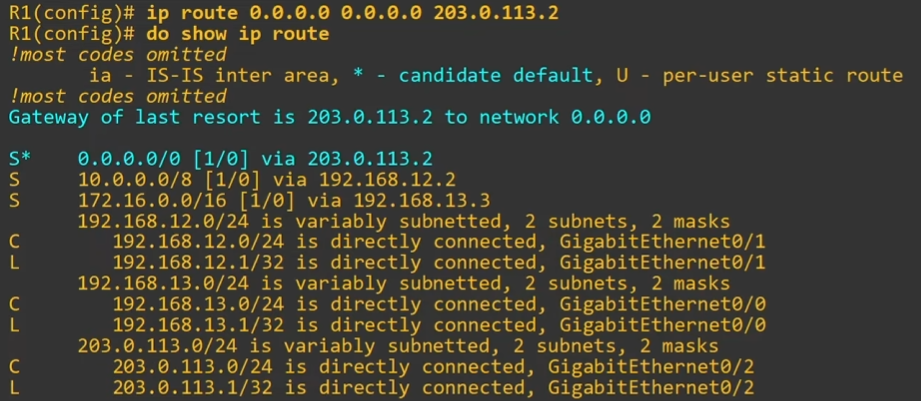ccna-notes
Static Routing
Consider the following network topology

Default Gateway
To send packets to destinations outside of the transmitter’s local network, they must send the packets to their default gateway.
- “gateway” is an old term for “router”, so it means “default router”.
- the default gateway config is also called “default route”
- it is a route 0.0.0.0/0 = all netmask bits are set to 0. Includes all addresses from
0.0.0.0to255.255.255.255(4,294,967,296 possible IP addresses) - it is the least specific route possible
- End hosts usually have no need for any more specific routes. They just need to know, to send packets outside of their local network, they should send them to theirdefault gateway

Static Routes
Lets look at the following example where PC1 wants to send something to PC4

- PC1 sends a frame through its default gateway (R1)
- R1 de-encapsulates the frame (look at the packet)
- R1 will check the routing table for the most-specific matching route
- The following is R1s routing table atm:

- R1 has no matching routes in its routing table so it will drop the packge
There are two possible path packets from PC1 to PC4 can take:
* `PC1` --> `R1` --> `R3` --> `R4` --> `PC4`
* `PC1` --> `R1` --> `R2` --> `R4` --> `PC4`
We will use the former one (R3) in this example
Each router in the path needs two routes:
- route to
192.168.1.0/24(PC1’s network) - route to
192.168.4.0/24(PC4’s network)
This will ensure two-way reachability (PC1 can send packets to PC4 and PC4 can sendd packets to PC1)
- R1 already has a connected route to PC1’s network
- R4 already has a connected route to PC4’s network
- The other routes must be manually configured (using Static Routes)
This will be the plan for static routes:
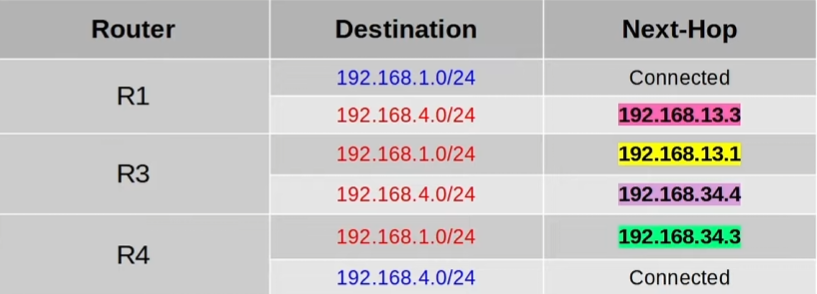
Static Route Configuration
The command for this is ip route <ip-address> <netmask> <next-hop>
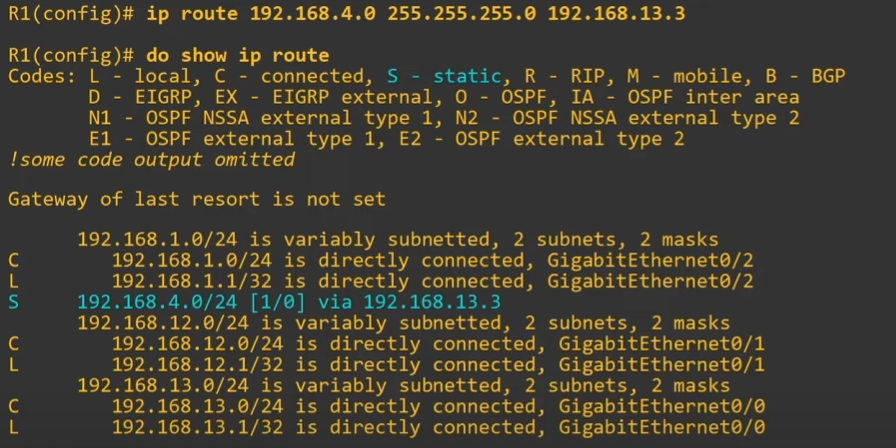
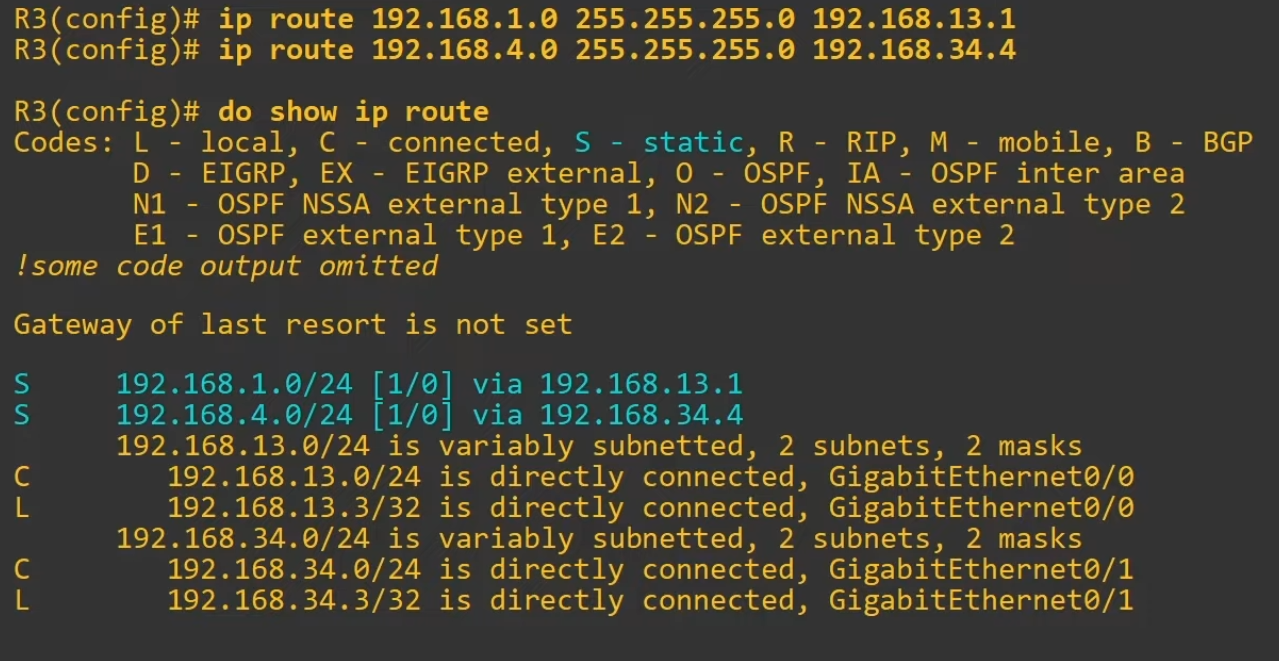
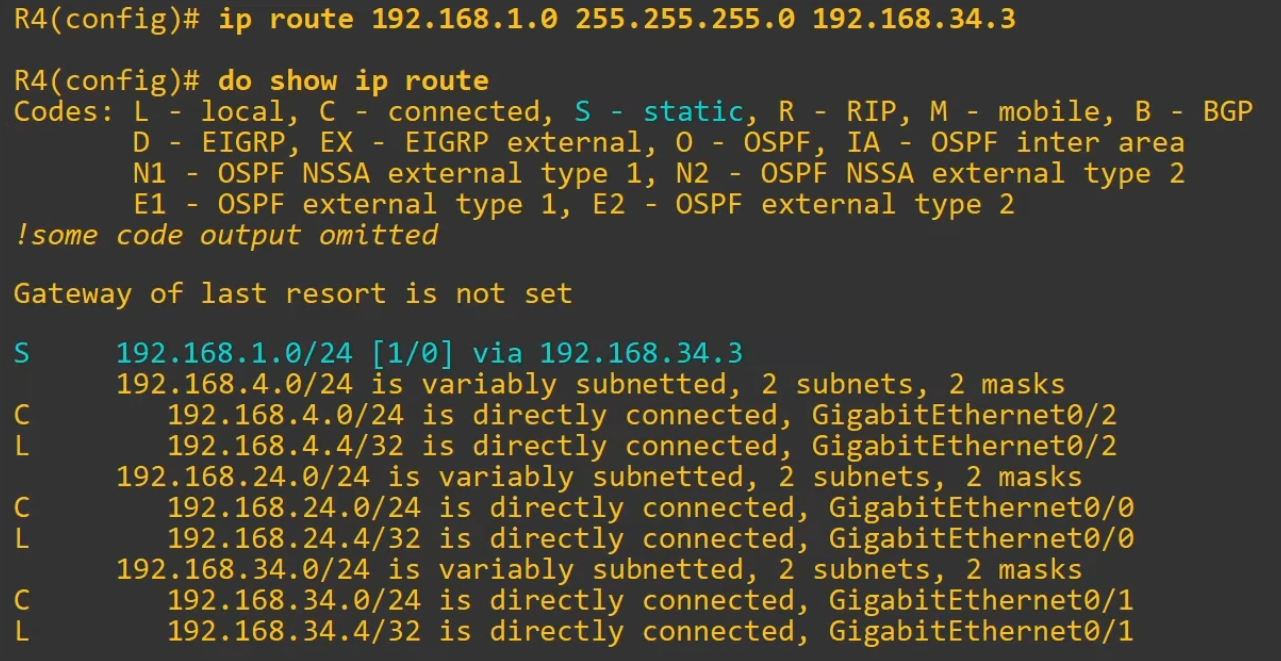
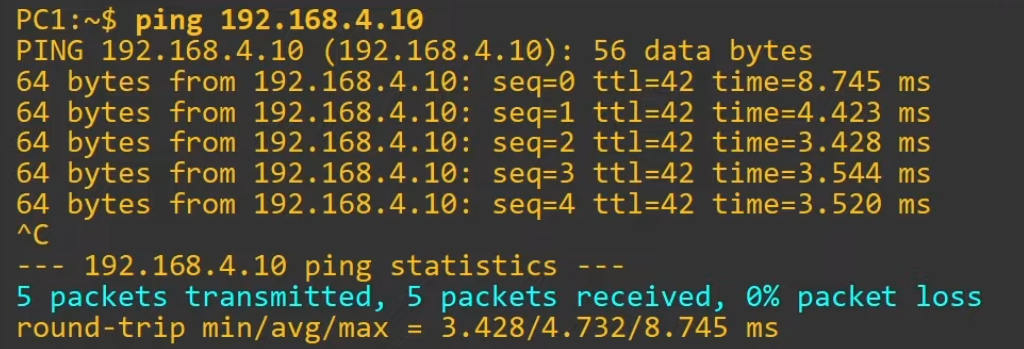
- Packet traveling from PC1 to PC4

Static Route Configuration with exit-interface
There’s two other ways to configure a static route:
ip route <ip_address> <netmask> <exit-interface>ip route <ip_address> <netmask> <exit-interface> <next-hop>
We’ll configure static routes for R2 using there:
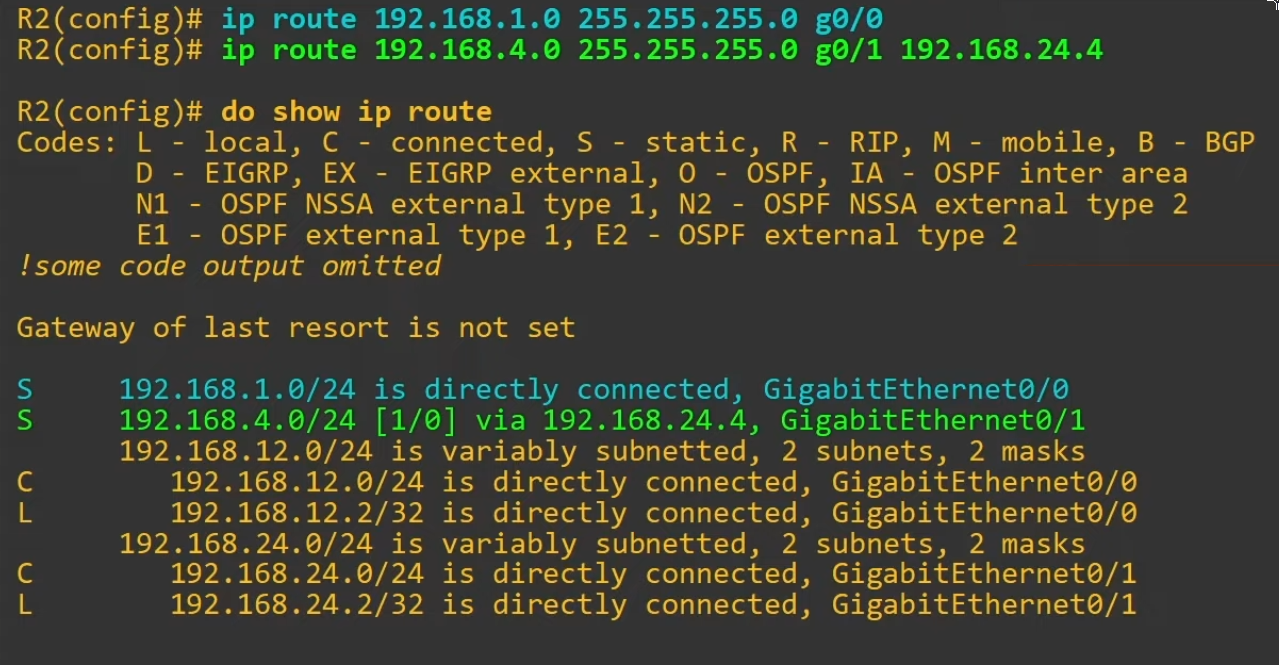
- notice that now we also get the interface name specified in the corresponding static route entry
- using only the exit-interface will show as
is directly connectedinstead of explicitely sayingvia <ip_address> - static routes in which you specify only the exit-interface relly on a feature called Proxy ARP to function
- neither config method is better than the other
Default Route (Gateway)
- a default route is 0.0.0.0/0
- often used to direct traffic to the internet
- if the router doesn’t have any more specific routes that match a packet’s destination IP address, the router will forward the packet using the default route
Example

No default route has been configured yet
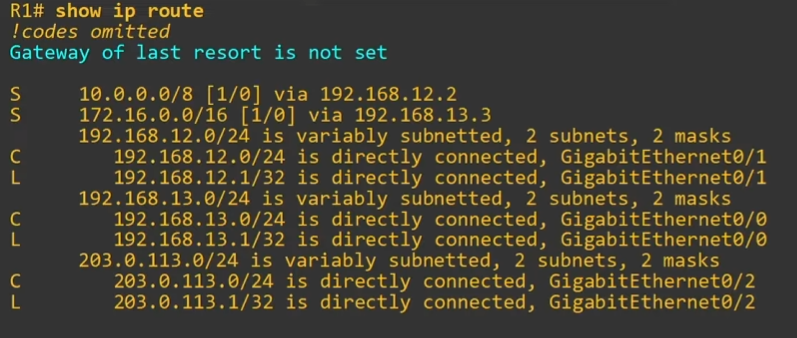
After configuring a default route, routing table automatically picked the best candidate to be the last resort IP address
